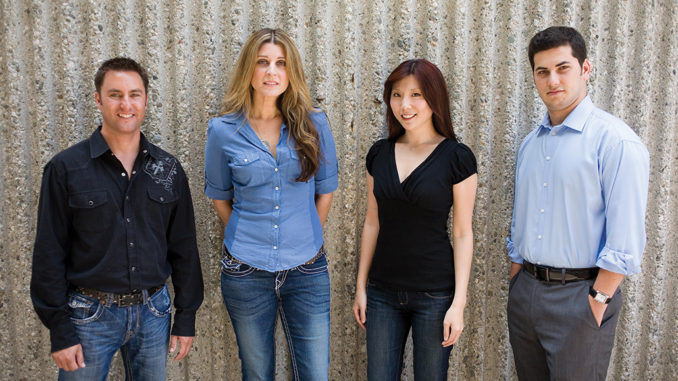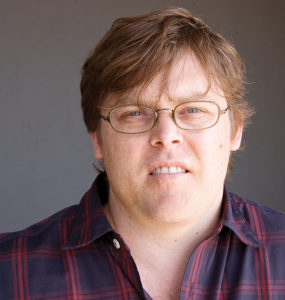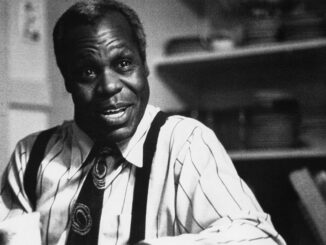
by Michael Kunkes
If there is one priority assistant editors agree on, it’s the need for organization. Today’s assistant editor may have dozens of tasks to perform daily, but only one real job—creating an efficient, smooth running environment that will leave his/her editor free to create.
The expansion of digital filmmaking into HD and beyond has seen film become an anachronism, rather than a competitor or adjunct to digital. Many of the traditional assistant’s duties are being re-shaped or re-tasked. The traditional codebook, one of the most critical parts of the film editor’s life, is becoming a thing of the past; crews rarely gather to view dailies as a group, and the ratio of assistants to editors has altered considerably from the established one-to-one model.
Today, no matter where an assistant is on the chain of command—the first, who bears the ultimate responsibility for the assistant team’s performance, or the seconds, who are assigned a variety of tasks––the required skill levels are high. Assistants must walk into an editing room versed in a variety of workflows or be able to quickly master new ones. Shifting technology now dictates that editorial doesn’t always interface with the lab; in some ways, it has become the lab. The assistant is the left brain of the editor, but creative opportunities still abound, as assistants are also learning more and practicing cutting temporary music as well as visual and sound effects. CineMontage spoke with a cross-section of picture, sound and music assistants on both coasts to draw a picture of a thriving position that is ever growing in importance.
As a first assistant on James Cameron’s forthcoming 3-D release of Avatar, Jason Gaudio supervises a crew of six assistants and keeps tabs on thousands of visual effects shots and numerous vendors, while working with editors John Refoua, ACE, Stephen Rivkin, ACE, and producer/director Cameron, ACE––himself a picture editor who heads the editing team. A Guild member since 1994, Gaudio’s credits as a first include Monster House (2006), Lemony Snicket’s A Series of Unfortunate Events (2004) and Cold Creek Manor (2003). He’s been working on Avatar for nearly three years.
“In some ways, I’ve taken on the roles of both an assistant and a visual effects editor,” says Gaudio, the one-time assistant visual effects editor on Titanic and Armageddon. “I’ve designed a FileMaker Pro database that incorporates the codebook, all the effects count sheets and scan orders; I also establish relationships with vendors and work with the editors to organize the workflow of how we’re going to turn shots over and how shots are going to come back to us. It’s about having a solid system, keeping your organization as simple and focused as possible, so that it can be as flexible as possible, to adapt to deadlines that are constantly shifting and changing.”
Keeping that focus day-to-day is not so simple. “Avatar is a very editorial-centric production,” Gaudio explains. “Jim Cameron has an Avid capturing on the stage, so he or another editor can cut footage instantly; this puts me right in the middle of production. I oversee all the shots coming in from vendors and prepare them by cutting them into the reels and prepping them for Cameron’s reviews.” In between his routine duties, Gaudio checks with the visual effects editors and assistants to see if they have any difficulties that need to be solved. “I try to deal with all the miscellaneous issues so that the assistants and effects editors can focus on building dailies, creating and checking count sheets and dealing with turnovers,” he continues. “Running an efficient room is about time management and keeping the team focused. If we’re not communicating with each other, we run the risk of duplicating efforts––or letting tasks slip through the cracks.”
“It seems that the editing room is becoming more like a finishing house and the first assistant is becoming more of a management position––they’re wearing so many hats that have little to do with editing… Assistants can get so caught up in the technology, and all the expectations that come with it, they may forget their own goal of becoming an editor… Which is what I want to be.” – Jason Gaudio
Jeremy Weinstein is currently an assistant editor on Syfy’s (formerly Sci-Fi Channel) Eureka, after a stint on Nickelodeon’s iCarly. He is also, at 27, the youngest member of the Editors Guild Board of Directors, representing assistant editors. He first became attracted to editing after directing a community cable show in high school. “When I looked at editing, I said, ‘Why would anyone want to do this? It’s so tedious,” Weinstein explains. “Then, in my senior year, I cut a documentary on the local fire department on the Media 100, and I saw what editors loved about making images work a certain way. I knew that was the path I wanted to follow.”
Eureka is being cut on Final Cut Pro, using Apple Cinema Tools to import the flex files. “The day before footage comes in, my fellow assistant, Matthew Gilna, and I get lined script notes from the shoot as well as camera and sound reports so we know what scenes will be completed or partial,” says Weinstein. “The footage then comes in as both ALE and flex files. We do the batching, group the clips, compile them into scene bins and––working on an XSAN––send the bins to the editors with instructions to refresh their drives so that the new material shows up, which they can then edit. We line up takes in the order they want and label each bin according to each editor’s wishes. And when the cut is done, they hand it back to us and we do temp sound effects and maybe some music. This is stuff you don’t want to mess up with the editors, so it’s important to stay organized.”
Lisa Shaw Phillips is third-generation Hollywood. Her father, Sam Shaw, a retiree, was a supervising sound editor; her grandfather, Francis Xavier Shaw, was an assistant director and film editor, and her great-uncle, Tom Shaw, was a producer and assistant director for John Huston and Sam Peckinpah. She has just finished working on Walt Becker’s Old Dogs with editors Ryan Folsey and Tom Lewis. Comparing the assistant’s role today to what it was in the pre-digital era, Phillips says, “When we were cutting and screening on film, every show was done essentially the same; the crews all had film training with varying years of experience, and all were working their way up to being an editor. The first had the seniority and the editor, with the creative skills and knowledge, was head of the department and had been at it the longest. Handing them trims and taking notes was how we all learned. Now, that’s not the case; the first position isn’t as transitory as it once was and was expected to be.”
The digital era has brought with it some major changes in the assistant’s role. “I believe that the assistant’s job is being viewed more and more as a permanent position, and not the pathway to becoming an editor that it once was,” says New York-based Rick Derby, who is currently on Roger Michell’s Morning Glory with editor Steven Weisberg. “As wonderful as the Avid is, there’s an engineering aspect to it, and it’s the editor’s job to edit the movie and the assistant’s job to manage the project and the health of the Avid. Assistants just aren’t in the room seeing how an editor creates a scene cut by cut. The editor who trained me once said, ‘Even if you fall asleep in that chair while I am working, you’re still going to learn to edit,’ and there is something to be said for being in the editing room while that process occurs. Assistants still do become editors, but usually for different reasons.”

Gaudio, who has assisted editors such as Conrad Buff, ACE, Michael Kahn, ACE, and Dylan Tichenor, ACE, also feels that it’s getting more difficult for assistants to move up to full editor. “There was a time when an assistant sat in the editing room, watched the editor cut, and the natural progression for the assistant was to one day become an editor himself,” he says. “Now, it seems that the editing room is becoming more like a finishing house and the first assistant is becoming more of a management position––they’re wearing so many hats that have little to do with editing.” Gaudio finds that on smaller shows, he has more of a chance to review sequences with the editors and to learn more cutting. “Assistants can get so caught up in the technology, and all the expectations that come with it, they may forget their own goal of becoming an editor,” he continues. “Which is what I want to be.”
“The editor remains the head of the department, but technology has turned things around and I would say that our skills, experiences and opinions are more relied upon now,” Phillips adds. “Editors look to their assistants not only for their computer and equipment savvy, but, at least in my experience, to work as more of a team. With high-definition preview screenings, much needs to be accomplished in a short time.” First assistants are getting visual effects cuts approved, as well as supervising and approving the online, titling sessions and sound laybacks, so that the editor can supervise and spend his/her time more efficiently at the mix and/or color correction with the director to make the preview dates, according to Phillips. “For a first, this is not only added responsibility, but it also brings accountability for one’s decisions and the added pressure that brings,” she adds.
There’s another perspective to this that might be more related to the economy, according to Derby. “Who used to cut lower-budget films?” he asks. “Less experienced people eager for an opportunity. Before the days of agents, if you went to a top editor for your smaller-budgeted project, that editor might say, ‘I’m too busy’ or ‘I can’t work for this fee, but my current or former assistant is ready to cut a film of this size.’ So often, established editors acted as agents for their assistants. While assistants do go on to cut, there is less and less of that lineage. Personally, I continue to work as both a first and a second because I still enjoy the thrill of the job, and the editors I work with respect my experience and wisdom.”
“Today, all picture arrives on QuickTimes and does not need to be manually digitized… All that evolution has brought us to the point where it’s quite rare today to have two or more assistants––or even one who stays on through the entire show. I don’t see how things can get much more efficient.” – David Stanke
Julie Carr, another veteran New York assistant, is currently first assistant to editor Chris Tellefsen, ACE, on Doug Liman’s Fair Game, based on the memoirs of outed CIA undercover agent Valerie Plame, starring Naomi Watts and Sean Penn. Fair Game is also one of the first major features shot with the RED camera. “I get a drive every morning with media and a bin, so all I have to do is copy my MXF media over, open my bin and I’m ready to go,” she explains. “It’s pretty phenomenal.”
Carr, who has worked on five films for editor Lee Percy, ACE, including Murder by Numbers, The Believer and The Ice Harvest, feels that assistants should come aboard a big feature several weeks before principal photography starts. “When the post plan is being set up, it’s really helpful to have the editorial team be part of those discussions,” she says. “I prefer to be here a couple of days before the editor starts––to make sure the systems work and the computers are talking to each other. If I can get hair, makeup or camera tests to test the system out, then by the first day of production I’m ready to roll.”
In an exception to what is becoming the rule, Carr says that dailies are screened every day on Fair Game. “We have a projector and screen set up in the editing room and Doug Liman and others in the crew come in every night and view dailies till midnight or later. I work a split shift with Peter Frelik, the other assistant, and the cutting room stays open 16 hours a day. This is very helpful because we do print out screening notes that contain everything the director says at those dailies. It’s a lot more than just knowing what the circled takes are––and it’s something that’s really missing from filmmaking today.”

Photo by John Clifford
First assistant sound editor David Stanke has been at Soundelux in Hollywood for 17 years. He reports that the sound assistant’s duties are broader than ever. They load DAWs with audio, dialogue and ADR, prepare sync dialogue from the original production track, receive turnovers from the picture department for every version of every reel, and prep that material for the sound editors. Ultimately, the assistant prepares hundreds of tracks of effects, dialogue, Foley and backgrounds––efficiently organized into ProTools sessions and delivered to the stage to be mixed and made into stems.
“As a first, I strategize with the supervising sound editor to track and manage the budget, figure out how many editors we need to hire and divide up materials for the mix stage; in short, the entire management of the show,” says Stanke, whose recent credits include the upcoming Hoodwinked 2 with supervising sound editor Michael D. Wilhoit, MPSE, and Gamer with Scott Martin Gershin, MPSE. “I frequently attend the mix, to make sure it kicks off well, and talk a great deal with the first assistant picture editor,” he continues. “Because the biggest problem at the beginning of a show is always sync, it’s important to make sure we know what frame rate the picture department is cutting at, what speed the dailies were shot at and what codecs and frame rates are being used in exports. There’s a lot of variety in this job.”
“My musical training, though not a prerequisite to do this job, definitely helps on the creative side… The decisions are ultimately [the editor’s], but he involves me in the process and will often ask for my input, so it helps to have an ear for music.” – Jeannie Lee Marks
Stanke reports that in the “old days,” the job was a lot more manual, sometimes requiring up to half a dozen assistants. “Editors would cut all day and we would spend all night backing up the material and loading in new material,” he recalls. “I used to load an OMF or guide track into the sound editor’s computer at night for him to cut the next day; now, I just upload it to the server, he pulls it down and I don’t have to touch his machine. Today, all picture arrives on QuickTimes and does not need to be manually digitized. We used to have to load dailies in real time from Nagras or DAT; now they are recorded on a hard disc and we get a broadcast WAV file. All that evolution has brought us to the point where it’s quite rare today to have two or more assistants––or even one who stays on through the entire show. I don’t see how things can get much more efficient.”
Assistant music editor Jeannie Lee Marks has been a Guild member for just two years, but has already worked on such releases as Enchanted (2007), Milk (2008) and the new G.I. Joe: The Rise of Cobra, working at Modern Music with veteran music editor Kenneth Karman, a frequent collaborator of composer Alan Silvestri. “My job is to make the music editor’s job easier, by keeping everything organized, setting up editing, scoring, temp and dubbing sessions including the I/O, create track layout cue sheets, spotting notes and other documentation, as well as backing up drives and helping out with editing and conforming,” she says.
On G.I. Joe, Marks, a former classical pianist, interfaces with the assistant picture editors by keeping up on the latest version of picture and supplying any requested music; she also provides cue sheets, change notes and dub-ready sessions to music re-recording mixers Scott Millan, CAS; David Parker and Leslie Shatz, and works with the score coordinator, recordists and techs. “My musical training, though not a prerequisite to do this job, definitely helps on the creative side,” adds Marks, who will next begin work with Karman on Disney’s A Christmas Carol. “The decisions are ultimately Ken’s, but he involves me in the process and will often ask for my input, so it helps to have an ear for music.”
What are the tools an assistant needs to succeed?
“A good assistant must have patience, organization and the ability to admit when he’s wrong,” Weinstein points out. “If someone’s upset with you and it’s your fault, you absorb the shock, take the hit and move on. You also need to be able to anticipate the needs of others in the editing room.”
“You have to have a really strong work ethic, be flexible and be able to handle pressure,” says Gaudio. “Most of all, it’s about teamwork. There’s nothing more gratifying than being a part of a team that pulls together to make a tough deadline.”





